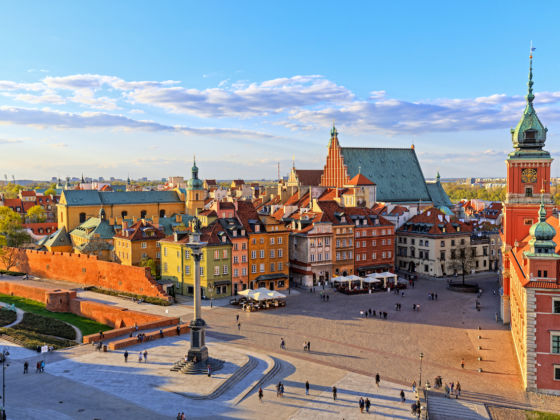I WAS STRUCK by the dominance of the color gray as I walked through the gateway stamped with the blocky letters “Warszawa Centralna.”
I had just happened to arrive in Warsaw on a cloudy day, and the white-washed sky seemed to exaggerate the drear of the city’s low-slung concrete buildings squatting in patches of overgrown weeds. The cars, buses, street stalls, and even stern-looking people all seemed dressed in muted tones, fading towards one color: gray.
